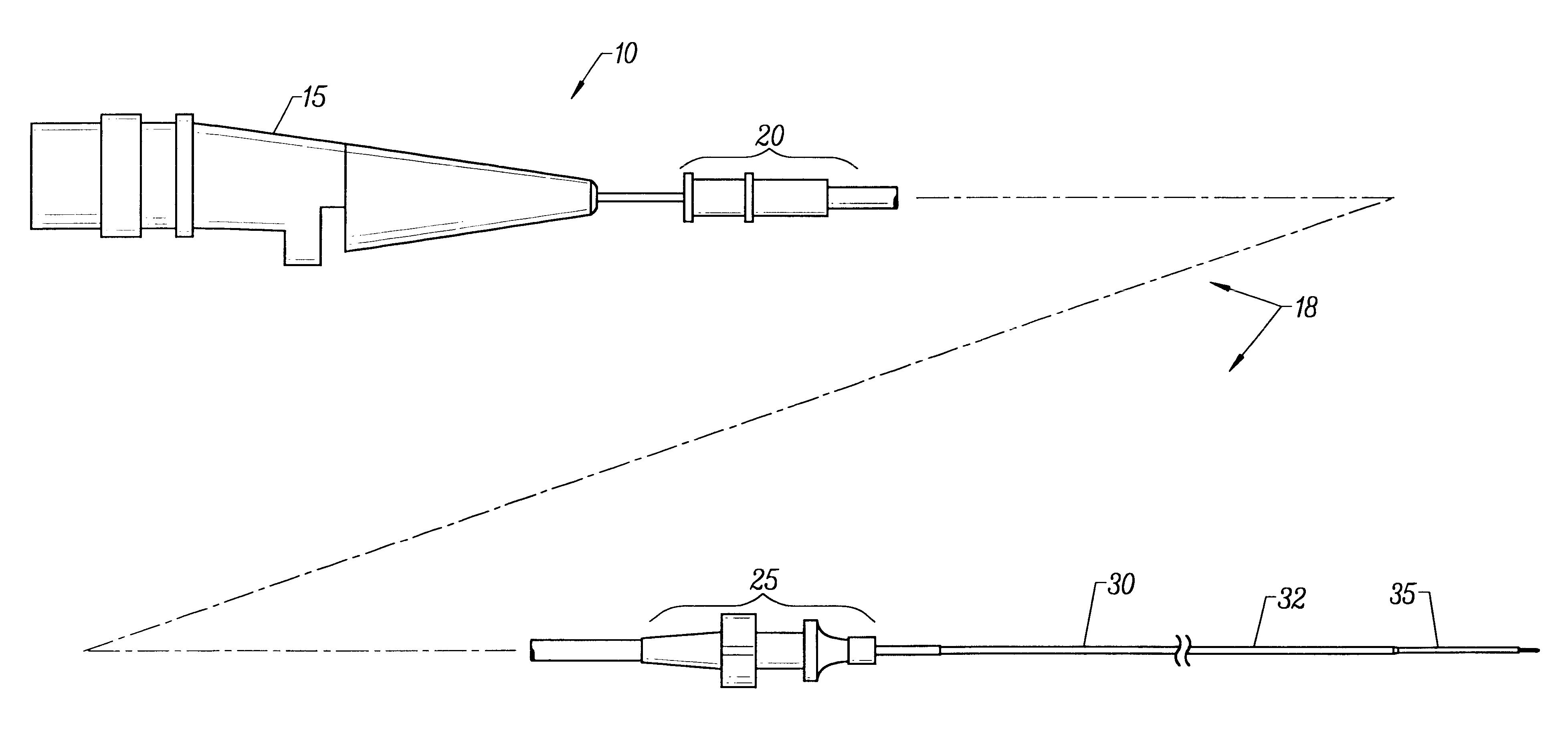System and method for intraluminal imaging
a technology of intraluminal imaging and catheter system, applied in the field of medical devices and methods, can solve the problems of reduced catheter wall strength, restricted blood flow, and serious risk to the health of peopl
- Summary
- Abstract
- Description
- Claims
- Application Information
AI Technical Summary
Benefits of technology
Problems solved by technology
Method used
Image
Examples
Embodiment Construction
The present invention provides an improved vascular catheter system comprising a catheter body having a reduced profile distal portion to facilitate entry into coronary blood vessels and / or tight stenotic regions. The catheter body will comprise two regions, a proximal portion and a distal portion, each having a single common lumen therebetween. The distal portion will extend from the distal end of the catheter body to a point of adhesion to and including a connector. The proximal portion will extend from a point of adhesion to and including a second connector to the distal end of the tuning hub.
The proximal portion will have a somewhat larger cross-sectional area to accommodate a distal tube and a proximal tube, joined together in a telescopic engagement and used to increase the working length of the drive cable.
Preferably, the catheter body will be made of a polymer or plastic material, which increases the bending stiffness and has improved hoop strength, i.e. accommodates large h...
PUM
 Login to View More
Login to View More Abstract
Description
Claims
Application Information
 Login to View More
Login to View More - R&D
- Intellectual Property
- Life Sciences
- Materials
- Tech Scout
- Unparalleled Data Quality
- Higher Quality Content
- 60% Fewer Hallucinations
Browse by: Latest US Patents, China's latest patents, Technical Efficacy Thesaurus, Application Domain, Technology Topic, Popular Technical Reports.
© 2025 PatSnap. All rights reserved.Legal|Privacy policy|Modern Slavery Act Transparency Statement|Sitemap|About US| Contact US: help@patsnap.com



